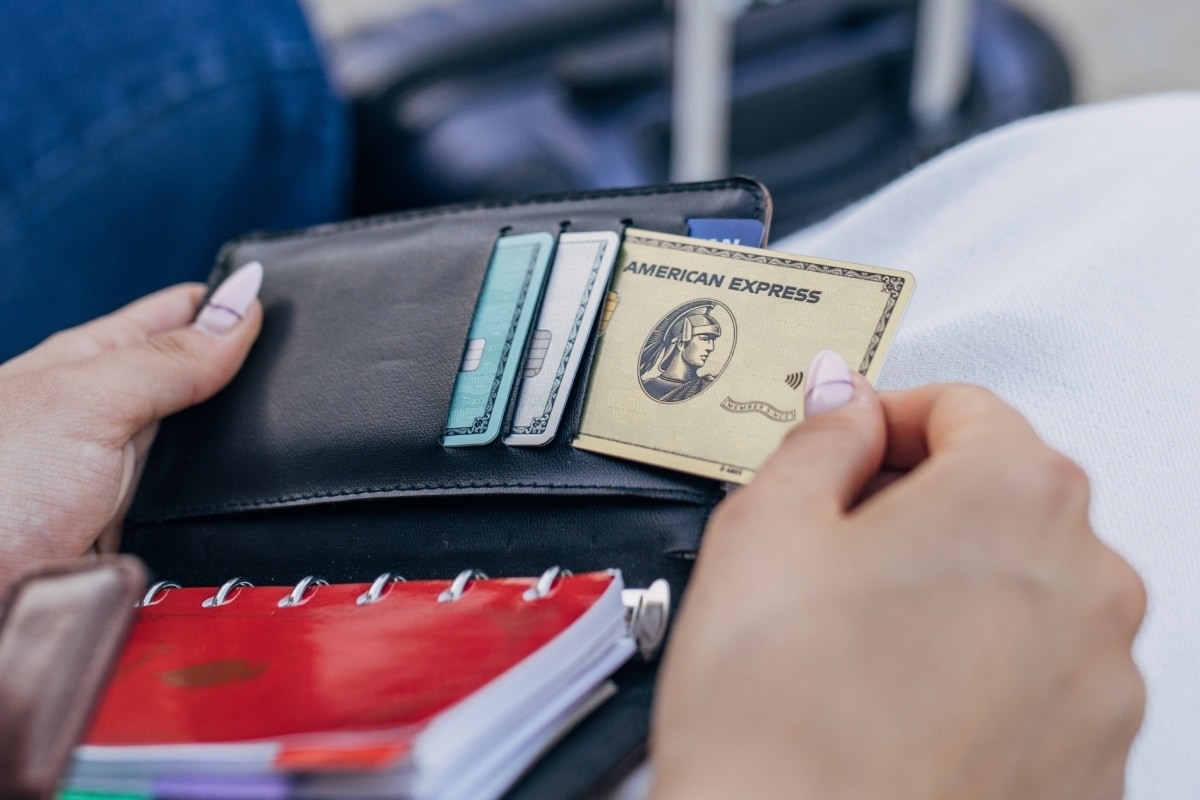5 Min Read | Updated November 30, 2023
Originally Published: April 1, 2022
Why You Shouldn’t Buy a Money Order With a Credit Card
Wondering if buying a money order with a credit card is a good idea? Learn about the drawbacks of using your credit card vs. cash to make an informed decision.

At-A-Glance
A money order is a payment method that enables you to transfer money safely from person to person or make payments for bills and other expenses.
Many retailers will not accept credit cards as a form of payment for money orders.
If a credit card payment is accepted, a money order purchase may be treated as a cash advance. Cash advances have a fee and typically the interest charged is higher than the Purchase Annual Percentage Rate (APR) as well. Additionally, interest will be charged as of the transaction date.
Can you buy a money order with a credit card? And if you can, would it be a smart thing to do? The short answers are “sometimes” and “probably not.” When it comes to buying a money order with a credit card, there are incremental costs to consider first.
Even in the digital payments era of mobile apps that transfer money instantly, money orders are still issued by most banks, some retailers, and the Postal Service—and are still broadly accepted as cash. You can use them in lieu of cash or a personal check to buy something or to transfer money to another person.
Advantages of Money Orders
Money orders have certain advantages over cash and checks, which has helped them remain on the scene. For one thing, they’re traceable. When you buy a money order you get a receipt with the date of purchase, the dollar amount, and a banking code that can be used to track it. This makes money orders more secure than most other forms of payment and—unlike cash—if a money order is lost or stolen you might be able to get it replaced.
Money orders differ from cash, checks, or both in four other important ways:
- Nearly universal acceptance. Money orders are paid for at the time of purchase and—unlike personal checks—the funds are guaranteed.
- No overdraft concerns. With money orders, there’s no account to overdraw.
- No bank account is required. Roughly 5.9 million U.S. households didn’t have a bank account as of 2021, according to the Federal Deposit Insurance Corporation(FDIC),1 so they could not write personal checks or use a digital payment service.
Disadvantages of Money Orders
Money orders have certain disadvantages as well:
- Value limit. Most banks and retailers set a maximum limit of $1,000 per money order.2 So, if you need a money order for more than $1,000, you may have to purchase multiple money orders. For example, if your rent is $2,000, you would buy two money orders for $1,000 each.
- Fees. Banks and other providers typically charge a small fee to write a money order. This will vary, depending on where you buy it from and in some cases, on the amount.3
- Require payment guarantee. In general, issuers will only accept a guaranteed form of payment, such as cash.
The Drawbacks of Buying a Money Order with a Credit Card
Credit card providers generally allow you to pay for a money order with a credit card, but they typically treat the transaction as a cash advance rather than a regular purchase. So, given the extra fees and interest charges you’ll accrue, it may be best to avoid using your credit card to buy a money order. Here are some reasons why:
- You’ll face additional costs. Cash advance fees are usually set at 5% or $10, whichever is greater. So, for a $100 money order, you’d pay $10, and on a $500 money order, you’d pay $25.4
- You’ll pay a higher interest rate. Since it will likely be treated as a Cash Advance, Most credit cards have a cash advance annual percentage rate (APR) that’s higher than the normal purchase APR, so you will likely pay a higher interest.
- There’s no grace period. Unlike most credit card purchases, cash advances usually start accruing interest immediately. That means the amount you owe will continue to grow from the day after you receive the cash advance until the day you’ve paid it all off.
- You won’t earn rewards. Cash advances don’t earn reward points.5
- It might be tough to pay off. When you make the minimum payment due on your credit card, the card issuer decides how to allocate it—which may be more toward balances with lower interest rates. So, if you carry a regular purchase balance on your card, your minimum payments won’t go towards paying your cash advance, which will continue to accrue interest at the higher cash-advance rate.
- It’s hard to do. Very few major merchants allow you to purchase a money order with a credit card. Others only accept cash, debit cards, or traveler’s checks for a money order.
FAQs on Buying a Money Order With a Credit Card
What is an acceptable form of payment for a money order?
Money order issuers, like banks and post offices, typically accept cash or debit as payment. Some issuers may accept credit cards, although your credit card issuer may charge a cash advance fee and likely a higher interest rate. Personal checks are not accepted for this transaction. It's always best to check with the location you plan to purchase from to see what forms of payment they accept.
Can I earn rewards points or benefits when using a credit card for a money order?
Unfortunately, a money order may be considered a cash advance. Credit card cash advances do not typically qualify for rewards programs, so you will not earn any rewards or benefits while using a credit card to purchase a money order.
The Takeaway
Money orders are widely available and can be useful alternatives to cash and personal checks. But many issuers allow you to buy a money order with a credit card. While some do, the cost will likely be higher. So, if you need a money order but have another way to pay for it, you may be better off keeping your credit card in your wallet.
1 “2021 FDIC National Survey of Unbanked and Underbanked Households,” FDIC
2,3 “Money Orders: When, Where, and How,” Investopedia
4 “What Is a Credit Card Cash Advance Fee?,” Experian
5 “What Is A Cash Advance And Should You Get One?,” Forbes
Elliot Kass is a journalist who has covered global business and technology from New York, London, and San Francisco for more than 30 years.
All Credit Intel content is written by freelance authors and commissioned and paid for by American Express.
Related Articles
How Much Should You Save Each Month?
How much you should save each month depends on your income, expenses, and savings goals. Many financial experts recommend the 50/30/20 budget rule as a good start.
Holiday Shopping Trends: Online Experiences and Mobile Purchases
Explore the latest holiday shopping trends, including immersive digital experiences, increased mobile shopping, and a rise in local support. Happy Holiday Shopping!
‘Level Up’ Your Understanding of Amex Card Levels
American Express Card ‘levels’ are more like unique categories to match your spending style, from casual spender to luxury traveler – and everyone in between.










